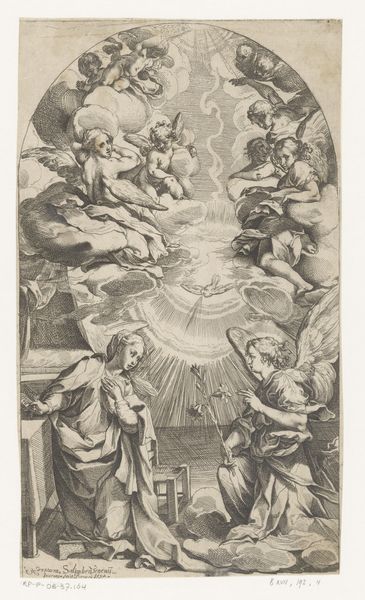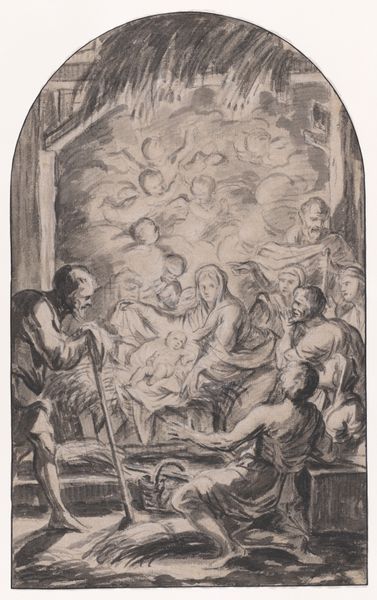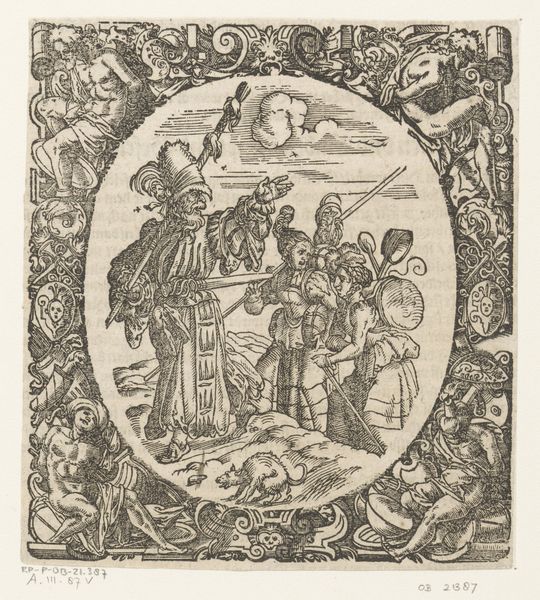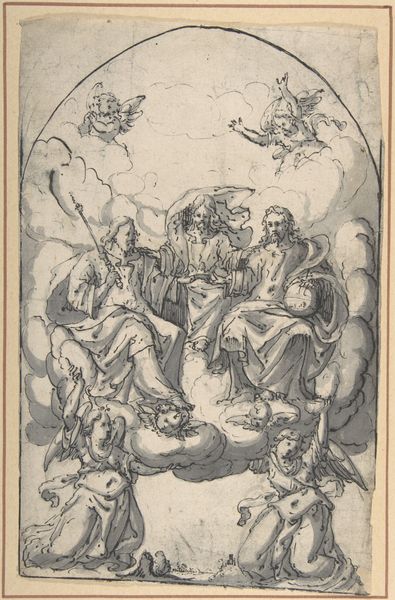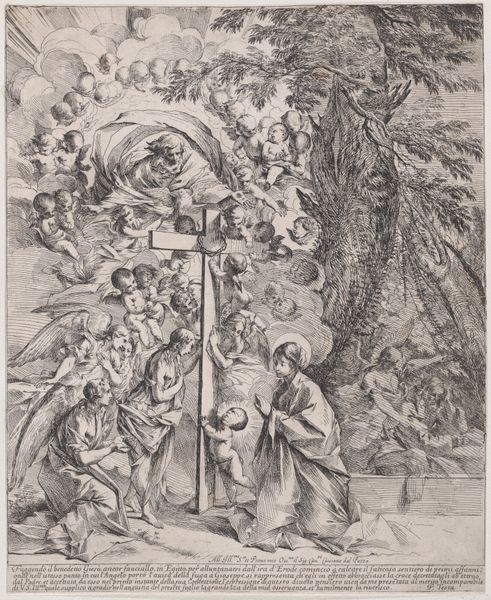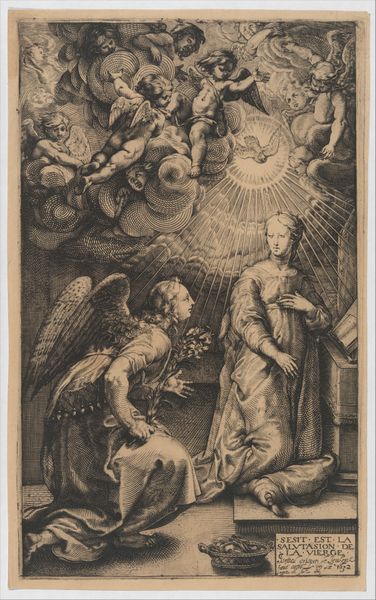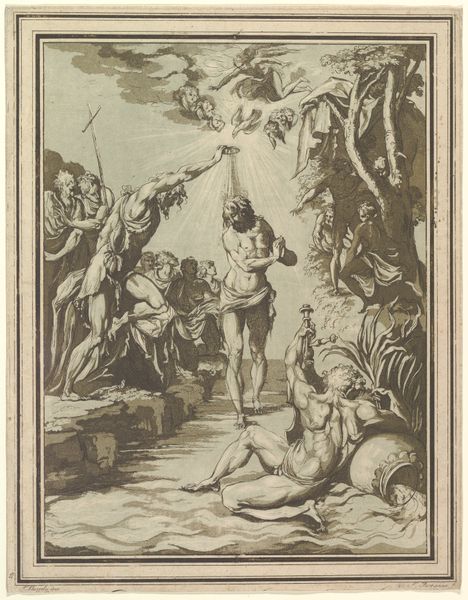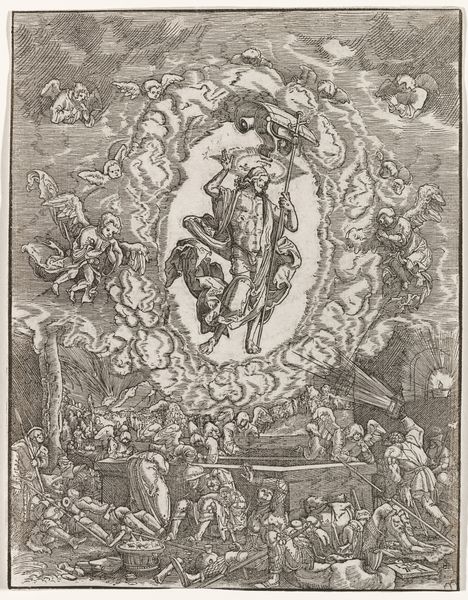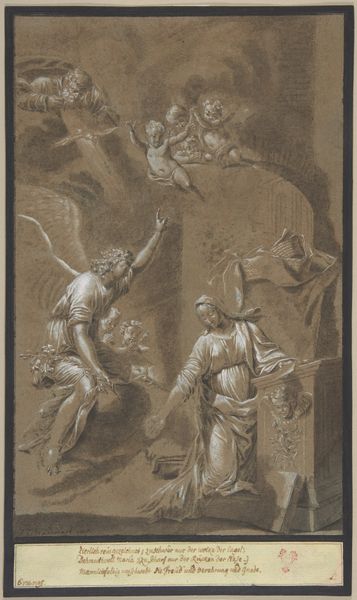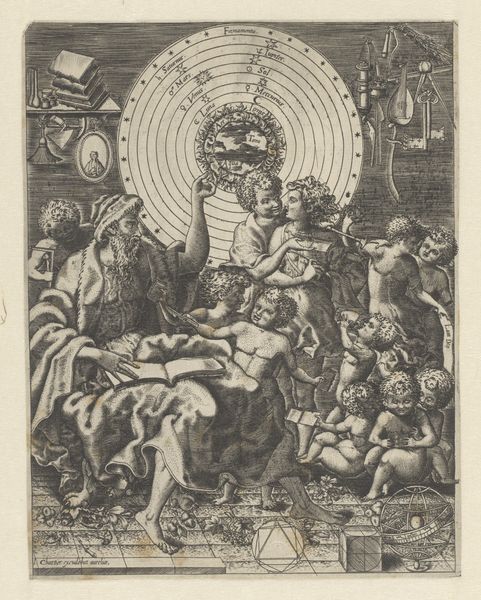
The Baptism of Christ with God the Father and angels among clouds 1577 - 1645
0:00
0:00
drawing, ink, charcoal
#
drawing
#
charcoal drawing
#
mannerism
#
figuration
#
ink
#
charcoal
#
history-painting
#
charcoal
Dimensions: 287 mm (height) x 182 mm (width) (bladmaal)
Editor: This is a drawing from sometime between 1577 and 1645, entitled "The Baptism of Christ with God the Father and angels among clouds" by Pietro Mera. It's done in ink and charcoal and it feels… theatrical, almost staged. What do you see in this piece? Curator: I see a reflection of Mannerist aesthetics intertwined with potent socio-religious narratives. Look at the way the figures are rendered; there's a certain elongation and artificiality to their poses that speaks to Mannerism's departure from Renaissance naturalism. Editor: Right, it's like everyone is striking a pose rather than just, existing. Curator: Precisely! But it's not merely aesthetic. Baptism is a symbolic act, a gateway, often loaded with historical baggage, especially for those marginalized or oppressed. Editor: Baggage in what way? Curator: Think about baptism within the context of colonization, for example. It's not just a religious ritual; it's often a tool of cultural erasure, forcing conversion and suppressing indigenous spiritualities. How do we reconcile the beauty of this drawing with the historical violence often implicit in such imagery? Editor: That’s a really uncomfortable, but crucial, point to consider. It completely changes my perception of what I’m looking at. I hadn’t considered the violence inherent in this subject. Curator: Indeed. Consider the power dynamics represented here: who holds authority, and who is being subjected to it? This becomes a loaded symbol when viewed through the lens of power, race, and historical oppression. Art becomes an active space for unpacking historical and contemporary issues. Editor: This drawing suddenly has a lot more to say. Thanks for opening my eyes! Curator: The past speaks to the present in powerful ways. It’s a privilege to decode its languages together.
Comments
No comments
Be the first to comment and join the conversation on the ultimate creative platform.
